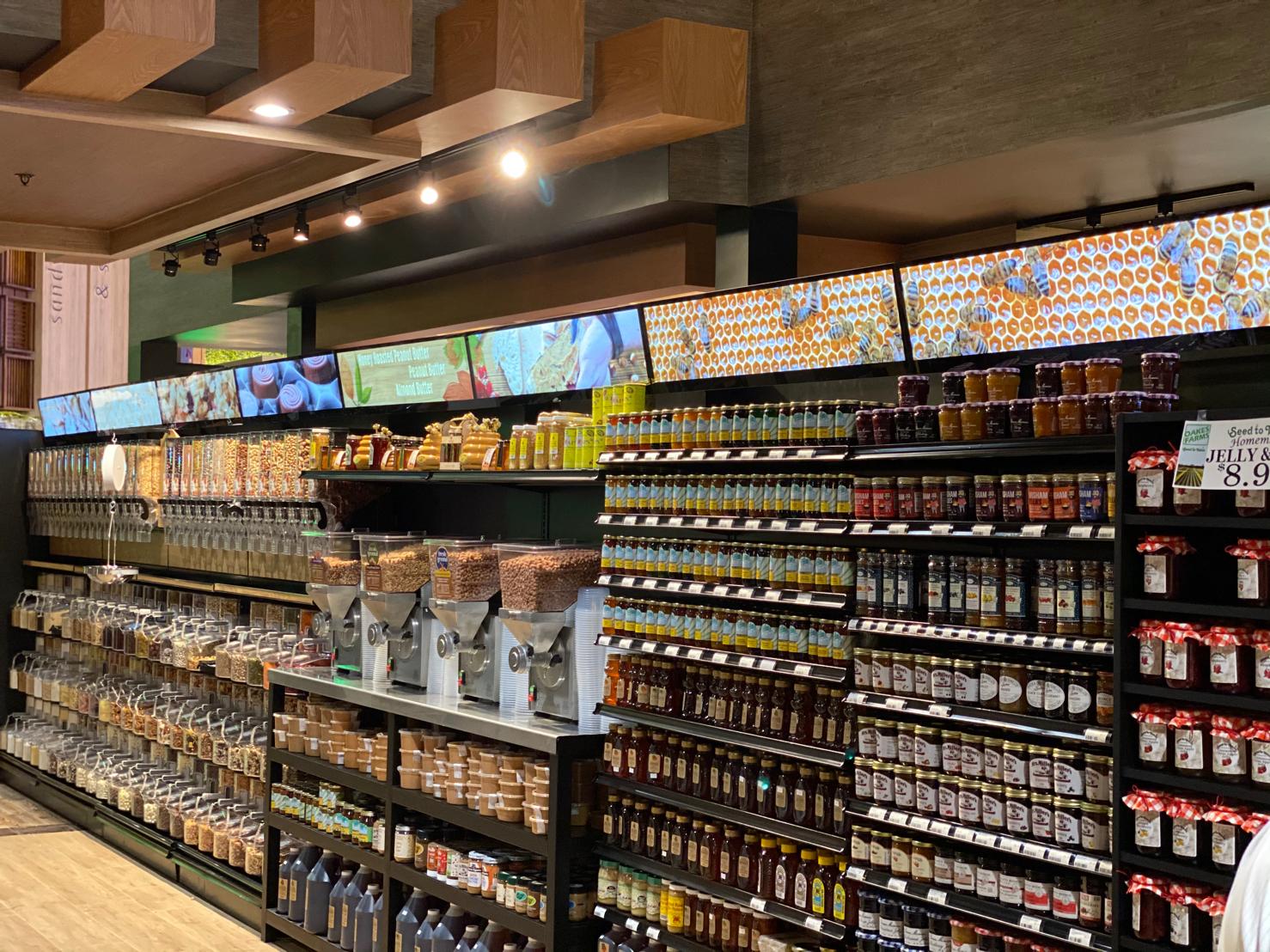
Smart Retail 2.0: Screens Are Key To Post-COVID Retailing
June 13, 2022 by guest author, Henrik Andersson
GUEST POST: HENRIK ANDERSSON, INSTORESCREEN
 Online shopping and mobile technologies were already compelling a lot of bricks and mortar retailers to start digitally transforming the way their stores looked, worked and were experienced by customers – but the many impacts of the global pandemic put those plans in much faster motion.
Online shopping and mobile technologies were already compelling a lot of bricks and mortar retailers to start digitally transforming the way their stores looked, worked and were experienced by customers – but the many impacts of the global pandemic put those plans in much faster motion.
Services like curbside pickup and buy-online-pickup-in-store (BOPIS) went from novelties and trial offers for a relative handful of retail banners to increasingly commonplace, as health safety mandates forced stores to close or dramatically restrict how they did business.
Widespread vaccination has allowed more and more retailers to open their doors again, and return to more normal customers services and practises. But the COVID experience has caused what are likely permanent changes for retail operations – such as how goods are promoted and merchandised, and how shoppers interact with retail staff.
Many different technologies are being applied to drive digital transformation, but a key component in almost any digitally-driven bricks and mortar store is display technology.
Communication is key
We’ve all seen them on shopping trips in the past year and more – paper signs taped to door windows and dry erase marker boards dragged over to store entry areas to make shoppers aware of health safety rules for the store, changes made to opening hours, and the availability of high demand goods (remember the great toilet paper shortage of 2020?).
Those retailers who were already using digital displays in key areas – both inside and facing out from windows – were able to easily pivot from branding messages, new product awareness and sales promotions to updated, polished messaging that could be revised quickly, and as often as conditions demanded.
Along with timeliness, relevance and the inarguable fact that messaging on vivid screens will always look better and more professional than hand-written sheets taped to windows, screens have operating benefits that are aligned with these changed times.
Screens, particularly interactive ones, can provide directories, price and product look-ups without requiring close person-to-person contact. When a touchscreen session is done, customers can just squirt some sanitizer gel on their hands and be protected against the minimal risks presented by using the screen.
But networked and interactive screens also play a big role in dealing with the new staffing realities facing retailers. In Q1 2022, the job site Indeed showed more than 1,000,000 retail job openings in the U.S.
With part-time and full-time staffing harder than ever to hire, and operating margins thinned by lowered in-store traffic and sales, networked screens can do everything from a switch-out of promotional posters to changing prices and promotions at merchandising positions and in the store aisles. In some parts of the world, correct shelf pricing is a compliance issue, where store owners can be fined for incorrect pricing.
Data drives digital
When lockdowns, restrictions and general health safety concerns forced a lot of shopping online, consumers encountered a kaleidoscope of tools and processes for buying, pick-up and delivery.
Some seasoned, digital-first retailers offer largely seamless shopping experiences that can shift information and transactions easily between desktop digital, mobile and in-store. But most retailers are offering experiences that are just starting down the digital path. They can be clunky, perhaps, and the online experience and functionality doesn’t necessarily sync up with what is happening and available in the stores.
Web technologies and digital handshakes between technology platforms – called APIs – have made it easier than ever (as well as secure) to share information between business systems and offer optimal relevance to shoppers.
Near or real-time data from systems managing things like inventory, pricing, sales and staffing can all directly inform how a store operates – pushing messaging to screens in front of shoppers, as well as back of house for managers and associates.
Think of a grocery that has a daily challenge with perishables, such as fresh-that-day baked goods. Two hours before store closing, for example, pricing can dynamically drop on all expiring goods, and be reflected on screens in that area, or elsewhere in the store. Imagine what happens when you can tell shoppers in Aisle C the store’s famously sinful cinnamon buns are now half-price at the bakery counter!
That store makes no money from goods that have to be thrown out, so flash clearance sales make a world of sense – perhaps at least covering production costs.
Screens can also dynamically update and change things like menus and promotions, taking offers off screens when data from store systems reports low stock levels, or increasing the frequency of messaging when systems data “flags” an overstock situation on a product.
Smarter stores
Real-time data is more than just pricing. Hyper-sophisticated Artificial Intelligence (AI) tools, and relatively simple things like sensors, are helping drive insights on what’s happening on the sales floor and behind the scenes.
Computer vision-based cameras that anonymously log shopper behaviors – like how consumers shop a store and where they dwell – directly inform decisions like staffing. For example, an AI-based camera sensor in the checkout/payments area can measure and assess line-up levels, and trigger alerts or on-screen messages asking for another cash position to open.
The same sensor systems can “load-balance” staffing – alerting managers to send associates from one section of a larger footprint store that’s quiet to an area that’s busy, and would benefit from more staffing and customer help.
Along with instant tweaks, computer vision data establishes long-term patterns – where people shop, where they dwell, and how behaviors can change by time of day and day of the week.
Other examples for computer vision AI:
– Threatening behaviour;
– Heat maps, walking patterns, changing depending on time of day, promotions, promote store efficiency;
– Shoplifting behaviour;
– Staff service emotion tracking;
– Detect spills in an aisle, or medical emergencies;
– Anomalies, freezer door open a long time, empty shelves.
DIY Shopping
Staffing shortage, health safety measures and convenience have all contributed to what are, in some cases, big changes to how retailing is being done.
Curbside pickup services were still rare, BOPIS pickup lockers and related services were pilot projects, and self-service checkout was widely derided as a tactic to cut staff and get shoppers to do the scanning and bagging work. But the pandemic changed much of that.
Curbside service is more widely available than ever at grocery, but who would have envisioned curbside pickup for painting supplies or coffee capsules? And self-checkout shifted from being a cost-saver to a safer way to check out, both for shoppers and staff. Safety measures turned self check-out skeptics into believers, pleased by the speed and the limited customer/staff contact risks.
When there’s a lot of change, there’s a lot of need for communication. For shoppers to adapt, they need to understand how things now work, and what to do. Paper posters can do baseline awareness, but digital displays that can run videos and animations – and be triggered to play specific files when a sensor picks up how someone is approaching.
These screens do the explanatory work otherwise left to staff, they’re always on and available, and always relate to consumers exactly what store managers want them to convey. Screens don’t give attitude.
Marketing in the aisles
The first wave of digital signage in large footprint retail environments saw displays suspended from ceilings and fixed at checkout lanes, with the hope or expectation that they’d be seen and the messages on them remembered.
Often, the screens were up too high to be noticed by shoppers, or located at the end of shopper journeys, with little likelihood shoppers would abandon the checkout line in response to a call to action promotion at the cashier.
In grocery and mass merchandise environments, digital marketing has shifted to merchandising aisles, shelves and other positions – driven by advances in display technology that allow marketing to happily co-exist with product.
Putting a conventional, TV-shaped display at shelves and endcaps eliminates precious merchandising and product space. But advances in LCD manufacturing, miniaturization of PCs and new ways of enabling power and connectivity have opened up the possibilities.
For example, my company, working with Lenovo, uses a wide variety of displays that ideally fit the shapes and dynamics of stores – like ribbons that stretch along shelf-edges, banners on aisle headers and columns and squares that suit fixture shapes and a store’s physical design.
Where conventional printed material can only show a single image, digital opens up the opportunity to schedule multiple messages and enliven marketing and promotions with full motion video and animations that draw the eye and trigger impulse buying.
We can run as many as 24 screens off a single PC, and we sorted out ways to easily retrofit common retail shelving systems, like Madix.
Making digital fit
 It’s evident that digital displays are a critical component in future bricks and mortar retailing. Displays tied to content management platforms, updated at a moment’s notice and even automated, ensure what shoppers see on their selection and buying journeys are timely, relevant and accurate.
It’s evident that digital displays are a critical component in future bricks and mortar retailing. Displays tied to content management platforms, updated at a moment’s notice and even automated, ensure what shoppers see on their selection and buying journeys are timely, relevant and accurate.
Those displays work best when they don’t look like add-ons, but beautifully fit the fixtures and surroundings – like they’re supposed to be there, and appear as add-ons. Ideally, the time, cost and other demands to add smart displays should be minimal.
As digital signage has matured, retail has seen a shift from boxy CRT-driven TVs to flat panel screens that not only got thinner and lighter, but also dropped dramatically in price at the same time as visual performance dramatically improved. But they still somewhat constrained design thinking – as plasma screens, LCDs and later OLEDs are all flat rectangles made in a variety of diagonal widths.
Now, with natively-manufactured ribbon strips and even square LCDs, there’s much more opportunity to fit the dimensions of the store, all the way down to fixtures.
The advent of fine pitch (higher resolution) LED displays has also opened up new possibilities to clad walls, ceilings and even floors with multimedia display technology. Some high-end duty- free, electronics and beauty brand retailers have even started making their outside-facing store facades all digital and changeable.
Shopping has changed
It can sometimes take what’s called a compelling event to force real change, and the pandemic has been the mother of all compelling events – causing huge upheaval that changed consumer expectations and needs, and forced major adjustments to how stores operate. The digital transformation plans that had a three-year timeline were accelerated into three month timelines, by necessity.
Frictionless and often contactless shopping is increasingly being expected, and if that’s not happening, shoppers can move on to bricks and mortars store that offer it, or just go online and get what they need delivered.
The strength of brands has grown even more important, as have shopper expectations about who they want to do business with. Younger shoppers, in particular, base their choices not only on price, but what that brand and store are doing about issues like sustainability and climate change.
Machine learning, sensors and hyper-connected stores mean retailers have a better sense of what’s happening right now, as opposed to what happened that day. They can respond to shortages and overstocks, do things like surge pricing, and develop a far richer understanding of how shopper patterns and demands ebb and flow through a retail week. Personalization is increasingly possible, especially in scenarios like fashion retailing.
The challenges of hiring for lower wage, high-churn sales associates jobs can be offset now by interactive displays that can function as proxies when staff are unavailable and assisted selling tools when they’re free. Rather than just telling customers what they remember about products and services, interactive displays enable them to pull up anything needed to explain and close a sale.
Many elements contribute to Smart Retail 2.0, but arguably the biggest key is the ability to effectively communicate with shoppers – giving them what they need and want to know. Nothing can do that like screens in stores.
ABOUT THE WRITER
Henrik Andersson is CEO of the merchandising-focused company Instorescreen, based in south Florida. Andersson and his technology partners delivered visuals that fit the overall design and intent of stores, and use devices like cameras and sensors that build an intelligent solution that reacts to customer proximity, helps shape store merchandising and selling decisions, and characterizes shopper behaviors and patterns.



In the Dec. 15 2021 complementary podcast, Mr. Andersson described LEDs as hot, energy inefficient, poor pitch, and high cost. In this article, LED is described as having “opened up new possibilities…”. So have the issues been resolved? How have you done it?
Yes traditional LED screen have those parameters and are not efficient for indoor use , we are today focusing on using LCD that has better specs , regarding the LED there have been a development as well to Micro LED the only negative here is that is very very expensive